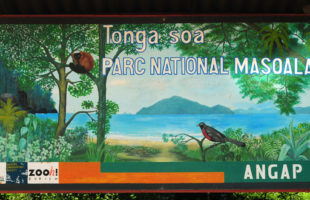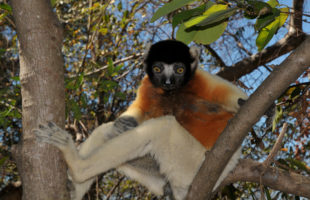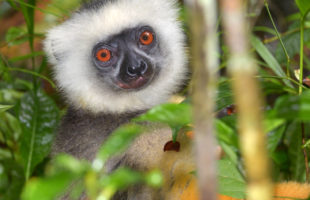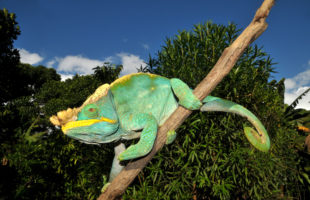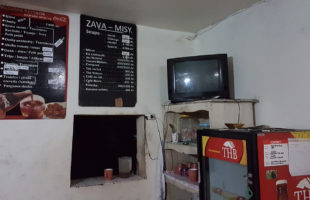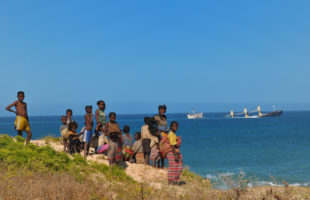Masoala: Masoala means “eyes of the forest”. The national park owes this name to the Aye-Aye (Daubentonia madagascariensis), whose eyes ghostly glow like two large yellow spheres in the light cone of the torch at night. Unfortunately, night walks in national parks are currently forbidden, so that only the name testifies to this magnificent experience. Location: The Masola National Park …
LesenMasika sipa
Secret kings of the North: Golden crowned sifakas
In an incredibly hot, dry and inaccessible area in north-eastern Madagascar live white lemurs, which owe their name to the golden fur on their heads: the Golden Crowned Sifakas (Propithecus tattersalli). The secret kings of the north reach a height of just 95 cm with a weight of 3.5 kg, whereby still further 45 cm of tail come in addition. …
LesenWidely spread, hardly researched: Crowned Sifakas
In the northwest of Madagascar live lemurs, which occur quite frequently, but are nevertheless hardly researched: The Crowned Sifakas (Propithecus coronatus). Their habitat is limited by the two rivers Mahavavy in the southwest and Betsiboka in the northeast. Today, however, there are indications that the species is much more widespread and also populates areas around Tsiroanomandidy, Amboloando (south of Miandrivazo) …
LesenNo life without the Ocotillo: Verreaux’ Sifakas
The Verreaux’ Sifakas (Propithecus verreauxi) lives in the south of Madagascar and belongs to the few lemurs that successfully colonize the hot and hostile spiny forests. It is a very adaptable species that can survive even in very small forest areas. It can even be found in some lowland rainforests in the southeast of the eighth continent. In the northwest, the …
LesenA diadem of fur: Diademed Sifakas
The Diademed Sifaka (Propithecus diadema) is with a total length of 105 cm and a weight between five and seven kilograms one of the largest lemurs of Madagascar and because of its unusual fur colors also one of the most beautiful. His face is framed by long white fur, which looks a bit like a tiara and gave these lemurs …
LesenThe sapphire rush
It all began in a small hut village of the Bara in southern Madagascar: Ilakaka. The village still had less than a hundred inhabitants in the mid-1990s, and there was nothing to suggest that this would change quickly. Ilakaka lies in a flat, hot plain between Ihosy and Toliara (French Tuléar) on the river of the same name. This puts …
LesenRanomafana National Park
Ranomafana: Ranomafana owes its name to its thermal springs, which constantly pump warm water (in Malagasy rano mafana) into the valley. Location: Ranomafana National Park is located between the two regions of Haute Matsiatra and Vatovavy-Fitovinany, about 420 kilometers south-east of the capital Antananarivo. For the journey via the RN7 from the capital, you need about one and a half …
LesenThe animal that brings death
No other animal in Madagascar has as many myths and fairy tales as the Aye-Aye (Daubentonia madagascariensis). Throughout the northern half of Madagascar, it is fady, which means taboo. Unfortunately, this fady does not mean that the animals are not touched by Madagascans, as with chameleons, for example. Instead, many inhabitants of Madagascar believe that the encounter with an aye-aye …
LesenAktuelles Tv-Programm
Sorry, this entry is only available in Deutsch.
LesenTribes of Madagascar
Madagascar’s population consists of 18 ethnic groups, some of which differ greatly in their appearance, their traditions and their beliefs. Although statistically 50% of Madagascans are Christians, most people still live in their old traditions with their own faith and according to the old legends. Here we would like to present the people of Madagascar, their origins and ways of …
Lesen MADAMAGAZINE Your Magazine about Madagascar
MADAMAGAZINE Your Magazine about Madagascar
